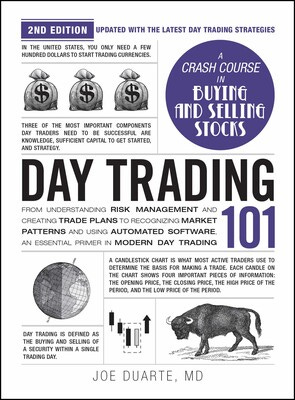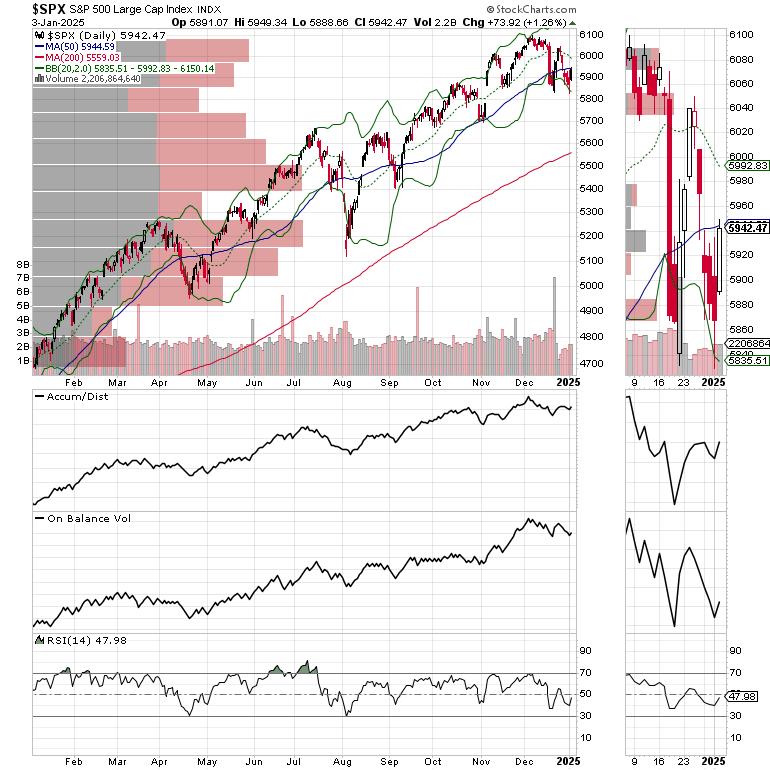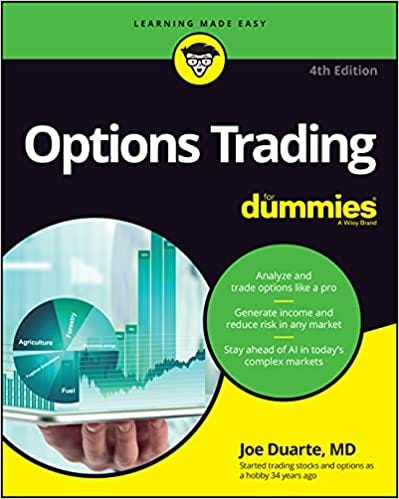Is the Worst Over? Treasure Hunting and Buying of Dips.
Wading Back into the Pond with Perspective
I am not a perma-bull, nor do I discount the possibility that we may be in the early stages of a bear market. I merely trade one day at a time and to how the action on every single day adds up to create a trend. And what I’m seeing currently is that the market is trying to recover. The real question is whether it can recover successfully or if a wicked failure of the fledgling bounce lies ahead.
That said, as I noted in my recent post, the longer this market holds above the recent lows, the higher the odds are that we’ve seen the bottom. That doesn’t mean that we can’t revisit the bottom or experience short bouts of intraday volatility.
Joe Duarte's Smart Money Passport is a reader-supported publication. To receive new posts and support my work, consider becoming a free or paid subscriber.
Subscribed
Indeed, a trading range for the major indexes combined with an upward bias of the market’s breadth would be ideal as it would suggest that smart, stealthy money (insiders, market makers, and big Wall Street houses and funds) are nibbling at stocks which reside in the bargain basement, while panicked investors flee.
Treasure chest image courtesy of https://www.stocktrekimages.com/
Is the Worst Over?
December ended with a thud Santa Claus flew by without delivering presents to stock investors. Yet, January is showing some hopeful signs. We’re not totally out of the woods, but there is some active dip buying evident.
Of the common scenarios which could unfold after a market crash - a V shaped bottom and a fast recovery, a steady sideways consolidation, or a bumpy frustrating and confusing trip full of fake outs and uncertainty – I am expecting a mix of the latter two. That’s because a grinding trade would wear out short sellers and short term traders while allowing trend traders to build positions for weeks, months, and in some cases years.
A fourth scenario is one where the market rallies to a previous support level and then rolls over making a new low. That’s when things get interesting as the character of the new low will likely tell the tale of what happens next.
And while it could take several weeks or longer, for the process to be complete, the tried and true principles of successful investing are as applicable as ever:
• Staying patient;
• Sticking with what’s working;
• Holding onto any position that is not stopped out. And most of all;
• Looking for relative strength, building a shopping list and retooling portfolios for the next up trend.
That’s why as this market has unfolded, I’ve been making a shopping list and cautiously deploying it via my Weekender Portfolio, which is designed for patient investors. Meanwhile the aggressive short term oriented Smart Money Passport had been holding nearly 100% cash until recently when we’ve waded back into the water with some interesting bottom fishing picks.
Buying Dips with Perspective
Buying dips has become a market staple over the last few years. Yet, it’s not without risk and there’s a right way and a wrong way to do it.
The true sign of a bottom is when markets fail to make new lows, especially as sentiment continues to signal high levels of fear. You can see the bottoming process best via the market’s breadth, as in the New York Stock Exchange Advance Decline line (NYAD), as I describe below. Fear is best visualized via options measures and indicators such as the CNN Fear/Greed Index (CFGI).
Focusing on the market’s breadth, rather than solely on the major indices is that the performance of indices removes the distortion caused in the indices by the weighing of mega cap stocks.
Currently breadth is stabilizing while the CFGI is reading in low 30’s, signaling fear. A market where breadth is stabilizing as fear gauges register near panic levels is, more often than not, one that is near or has already bottomed.
This divergence is well recognized by the smart money, which uses the high levels of fear in the investment crowd to sift through the rubble seeking opportunity and value. Here are three sectors which are being bought on the current dip.
The SPDR S&P Software & Services ETF (XSW) is seeing some nibbling after falling to its 50-day moving average. There is double support in this area from a large VBP bar, which makes this price point crucial. If it holds, we can expect a return toward the recent highs.
Semiconductors, such as in the VanEck Vectors Semiconductor ETF (SMH), are also poised for a significant advance. This ETF has been ignoring the market’s pull back as it consolidates. A move above $260 in SMH would be the clarion call.
Some sectors are so beaten down that they have little recourse but to rise. One is residential real estate, especially REITs which specialize in home rentals – apartments and single family homes. You can find them in the iShares Residential Real Estate Capped ETF (REZ). REZ is testing the support of its 200-day moving average after tumbling over 11% since its September top. The supply and demand scenario for homes hasn’t changed, but higher interest rates have hit the sector, which is ripe for a rebound once bond yields ease.
Ten Year Yield Hits 4.5%.
Bond traders have STILL not recovered from Powell’s inflation comments. As a result, the U.S. Ten Year Note yield (TNX), the benchmark for the average 30 year remains above the key 4.5% yield, closing possibly headed for 4.75%. This type of action in the bond market, will not be positive for stocks over the long term.
Liquidity Flattens Out
Liquidity, the ease with which money travels through the financial system is the key to bull and bear markets. When liquidity is ample, markets tend to rise. When liquidity is scarce markets don’t do well. The Federal Reserve’s National Financial Conditions Index (NFCI) is a readily available tool which indirectly shows us the state of liquidity in the markets.
A decline in the weekly NFCI number indicates that the ease with which money can be borrowed is rising. Last week, NFCI remained nearly unchanged, a sign that conditions are stable but are not improving further for now. This is a less bullish scenario than we saw before December, because the lower the number goes, the higher the liquidity level in the financial system.
Bitcoin Has a Date with Destiny
Bitcoin (BTCUSD) is consolidating, but seems to be preparing for another go at $100,000.
I just recommended a new BTC trade at the short term focused Smart Money Passport. If you’re an ETF trader, consider, Joe Duarte’s Sector Selector. It’s FREE with your monthly membership to Buy Me a Coffee. Sign up here. If you’ve been thinking about starting a day trading career, my new book “Day Trading 101” will get you started on the right foot. For steady gainers, check out the Smart Money Weekender Portfolio. I’ve just added several new positions in this weekend’s edition.
Watching the 50-day Moving Average on NYAD
The New York Stock Exchange Advance Decline line (NYAD) has formed a bullish double bottom. Yet, a crucial test of the current rebound will be the 50-day moving average. NYAD has followed technical parameters nearly flawlessly after its recent oversold reading of 30 on the RSI indicator. We may see some backing and filling near this key resistance level.
The Nasdaq 100 Index (NDX) successfully found support at 21,000-21,250 and its 50-day moving average Mega cap tech stocks continue to lead the way. A move above the 20-day MA will likely lead to a retest of the recent high.
The S&P 500 (SPX) remained below the 6000 level as short lived, as the 50-day moving average is now resistance. A test of 6000 is likely this week.
VIX Remains Below 20
The CBOE Volatility Index (VIX), remains below 20 as put option buyers have backed off.
VIX rises when traders buy large volumes of put options. Rising put option volume leads market makers to sell stock index futures to hedge their risk and leads markets lower. A fall in VIX is bullish signaling lower put option volume, eventually leads to call buying which is bullish as it causes market makers to buy stock index futures raising the odds of higher stock prices.
To get the latest up to date information on options trading, check out “Options Trading for Dummies”, now in its 4th Edition – Available Now!
#1 Best Seller in Options Trading
Now in Audible Audiobook Format
Options Trading for Dummies (4th Edition) Audible Audiobook – Unabridged
Joe Duarte MD (Author), Terrence Kidd (Narrator), Tantor Audio (Publisher)
4.5 out of 5 stars.














